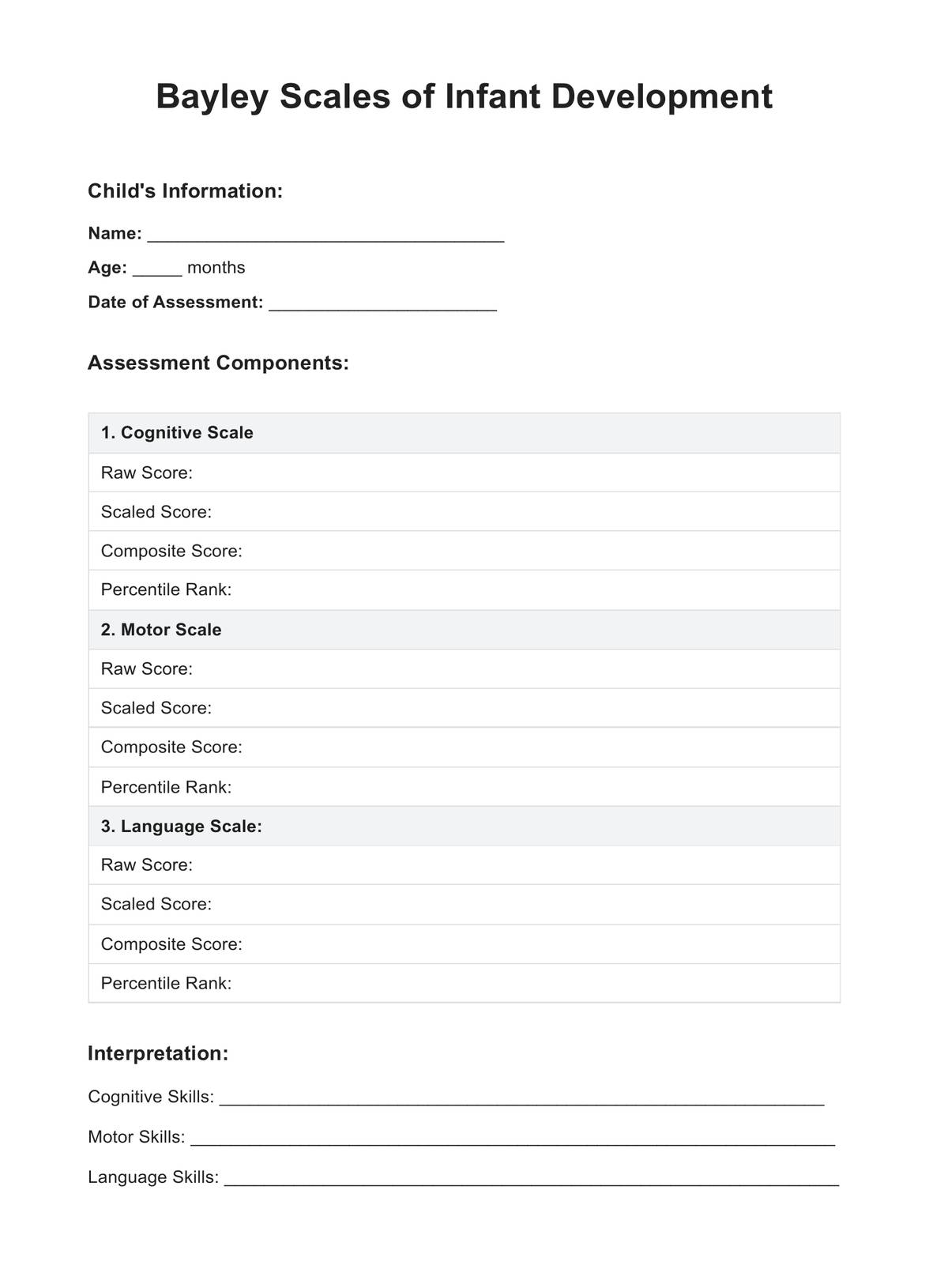The Bayley Scales of Infant Development (BSID) were created by psychologist Dr. Nancy Bayley in the 1960s. The test has since undergone multiple revisions, with the most recent version being the Bayley Scales of Infant and Toddler Development, Third Edition (Bayley-III), published in 2006.

Bayley Scales Of Infant Development
Explore the Bayley Scales of Infant Development, an assessment tool for evaluating infants' cognitive, motor, and language skills.
Use Template
Bayley Scales Of Infant Development Template
Commonly asked questions
To use the Bayley Scales:
- Obtain manual and materials.
- Understand procedures and scoring guidelines.
- Set up age-appropriate materials.
- Administer assessment as per manual.
- Record task performance.
- Convert raw scores to scaled scores, then to composite scores and percentile ranks.
- Interpret and share results for intervention planning.
To interpret the Bayley Scales:
- Analyze scaled scores in each domain to gauge a child's abilities.
- Review composite scores and percentile ranks for a holistic developmental view.
- Spot strengths and weaknesses.
- Consider influencing factors.
- Collaborate to develop targeted interventions.
EHR and practice management software
Get started for free
*No credit card required
Free
$0/usd
Unlimited clients
Telehealth
1GB of storage
Client portal text
Automated billing and online payments











